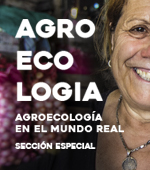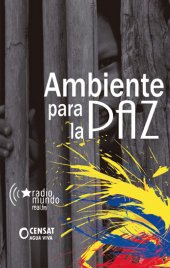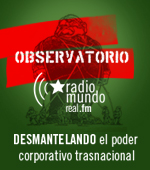
27 de enero de 2011 | Entrevistas | Derechos humanos
Heavy Rain
Uruguay: the story of Jorge Mérola and his wife, poisoned by soy producers
Descargar: MP3 (2.2 MB)
In Durazno department, Uruguay, rural families suffer serious health problems after being sprayed with agrotoxics used in the production of GM soy. The government does not provide a solution.
The Uruguayan countryside is suffering this summer a serious drought, which makes water for crops, cattle and even human consumption scarce. This raises the price of food, which will also be scarce in 2011.
Even though water is not enough, in Durazno department, 200 km from Montevideo, where GM crops promoted by foreign investments are abundant, rains have become a symbol of death, not life.
Exactly a year ago, in January, 2010, Jorge Merola and his wife, Laura, were working in their cattle field, near Villa del Carmen town. A few days before, an airplane had sprayed agrotoxics on the GM crops that were established surrounding Merola’s land some years ago.
It was raining and Laura washed her face with the water running down the roof. The reaction was almost immediate: the next morning Laura had blue marks in her face which spread rapidly to the rest of her body, confusing doctors who took long in diagnosing her, said Jorge to Real World Radio.
The rains, that wash the pesticides applied in crops, cause agrotoxics to be sprayed in concentrations higher than those authorized due to a matter of costs (aerial spraying is very expensive). A year ago, it rained day after day.
A week after Laura’s poisoning, it started raining while Jorge was working in the field. When he got home, he started itching and the doctor didn’t hesitate in linking his symptoms with agrotoxics sprayed by the soy producers.
The company in charge of the soy fields in the region is Calyx Agro, from Argentina, and was created in 2007 for ”identifying, acquiring, developing, converting and selling land in Brazil, Argentina, Uruguay and Paraguay”; and “entering into farming agreements for shared cropping with major farming operators or landowners in each country and managing and operating the properties to produce a diversified range of agricultural products and commodities”, according to their website.
A year after the events, Laura’s health hasn’t improved: she was diagnosed with dermatomyositis, she has lost 20% of muscle movement and is being treated with chemotherapy. She had to move to Villa del Carmen, and can’t return to the countryside to avoid being poisoned again. In turn, Jorge’s health has improved and he travels every day from the town to their field.
In addition, several dead animals with rigid jaws and muscles have appeared, and he highlights that the cause is the same.
The surface planted with GM soy in Uruguay has been increasing at high rates in the past five years, and it now reaches 900 thousand hectares. Uruguay is the sixth largest net exporter of soy in the world, and the eighth largest producer.
The main companies of this sector are investment partnerships, investment funds, or trust-funds, mostly transnational corporations that come from Argentina due to the absence of export restrictions and the lower prices of lands.
Photo: anteriores.eldiariocba.com.ar








